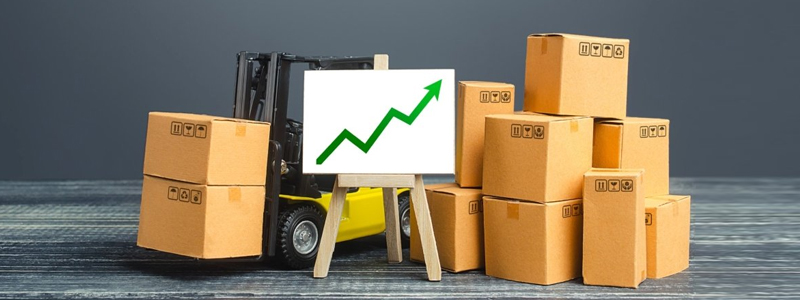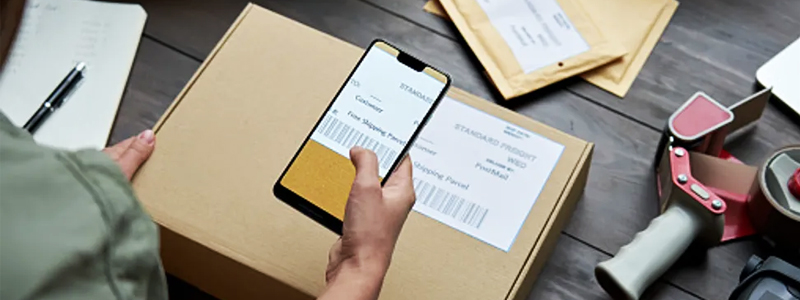How to Keep Track of Your Stock: 10 Inventory Management Techniques

No matter what business you own, from retailer to wholesaler, you need to maintain the inventory perfectly across multiple channels. Proper inventory management plays a critical role in reducing costs and maximizing profit. Though some people still manage inventory manually on paperwork, most business owners adopted digital inventory management systems like software and apps. These tools help them effectively monitor sales and stock availability and understand sales trends. Here, I will shed some light on inventory management techniques for both manual and digital methods. Prior to that, let’s know what inventory management is.
What Is Inventory Management?
Inventory management refers to the process of maintaining stock as per present sales and for possible contingencies. It plays a pivotal role in both retail and wholesale businesses since it ensures the availability of the required products in enough quantity at the right time. Inventory management systems aim at reducing costs, improving cash flow, and maximizing sales for all including ecommerce, physical stores, small, medium, and large companies.
How Inventory Management Affects Business

Efficient inventory management makes sure that everything is kept at the optimal level from buying products to stocking and selling them. It helps business owners predict future sales and determine the correct amount of products they need when inventory runs low. Thus, it saves a lot of money by preventing overstocking and providing sufficient goods in keeping with the sales. You will be benefited from a systematic inventory management process in the following ways.
- Minimize Waste Costs: If you sell perishable items, you must pay painstaking attention to the stock availability to reduce the gap between demand and supply. After a few days, these items start to decay and turn to waste. So, it’s crucial to figure out the right amount of inventory to minimize waste costs. An inventory management system does that efficiently.
- Cut Storage Costs: When you overstock products, you have to store them in either a warehouse or a freezer. On top of that, excess stock means added staffing costs. An inventory management system successfully forecasts the necessary amount of inventory and helps reduce storage costs.
- Maximize Sales: Lack of stock has equally adverse effects on business as excess stock. If you run out of stock while a product is still in demand, you’ll lose sales and make a poor impression. Proper inventory management will let you know when to restock a product, hence maximum sales.
- Ensure a Free Cash Flow: A smooth cash flow helps business grow more. If your money gets stuck in unsold inventory, it can’t be utilized for other purposes. An inventory management system calculates the correct number of products an owner needs for a specific time period. Thus, it prevents investing in inventory unnecessarily and facilitates a free cash flow.
- Keep Track of the Stocked Goods: From a sales perspective, you need to track inventory to know what products to order more and what products are overstocked. From a manufacturing standpoint, you need to track inventory to understand which raw materials are running short, what to manufacture more, and what products need to be paused. Besides, you can detect discrepancies easily and take immediate action if required. An inventory management system also keeps track of theft and damaged items. In this way, it helps owners determine the loss and overcome that.
How to Keep Track of Your Inventory: 10 Practical Techniques

If you run a small business, it’s very much possible to track stock for your business conveniently with a manual inventory management system. But, if you have to deal with numerous products of different categories and sizes, it becomes an arduous task. To ease the process, you can use an inventory management software or app. For both systems, you can gain optimal results by applying the following techniques.
1. Determine the Demand

As a business owner, the first thing you need to do is analyze the market and understand the demand for your products. Observe sales practically and take note of the frequently sold products, slowly sold products, and unsold products. Then compare the supply and demand, try to minimize the gap as much as possible. Predict future sales depending on sales history, market trends, occasions, and festivals. Get the minimum number of products stocked to ensure a seamless sale.
2. Use FIFO (first in, first out) Method

You should sell a product while it is still relevant in the market. Sell your oldest stock as a priority, and then go chronologically to apply the FIFO techniques. This is a must-to-follow method for products that are prone to spoil quickly. If you can’t sell older products first, they will become a waste. The first in, first out technique also applies for nonperishable items. The more a product remains in inventory, the more it becomes outdated in terms of fashion trends, packaging designs, and seasons. Besides, products may get damaged, stolen, or become unsellable for many reasons. That’s why my recommendation is to place old products at the front and add new products from the back. This will facilitate the FIFO process helping you get rid of older items first.
3. Look for Trusted Suppliers
If your suppliers lack a sense of responsibility, it will ultimately affect your reputation. An unexpected delay in product delivery, a supply of fewer items, and defective products are three major issues associated with an unreliable supplier. You can discuss such problems with your suppliers first. If nothing changes, be ready to switch partners, otherwise, you have to deal with uncertainty.
4. Specify Low Selling Items
You can’t expect all your products to be sold timely. There are surely some products that don't sell for a few months. Don't reorder those items and get rid of them immediately by implementing innovative techniques. You can introduce new offers like Buy 1 Get 1 Free offer, 30% discounts, clearance sale offer, etc.
5. Use Inventory Management Software or App

An efficient software provides users with a great insight into every aspect of their business. It updates data in real-time and works directly with POS (point of sale). A well-synced software regularly sends sales analytics and other inventory alerts to owners’ email. Some apps come with added features to help users with barcode scanning, automated stock controlling, Radio Frequency Identification (RFID), and batch tracking.
If you are an Excel expert and know how to use various formulas, I suggest you use Excel to manage your small business. But, ensure that all the inputs are correctly put and the right formula is applied. Use Excel as a low-cost inventory management system if you're on a tight budget.
6. Make Different Categories
All products don't sell equally nor render the same revenue. In most cases, 20% of stock generates 80% of the total revenue. Set a priority list according to the amount of profit made by selling an item. Keep the most profitable products under category A, less profitable ones under B, and slow-selling items under C. Keep the category A products always in stock so you don’t lose customers. And sell the category C products at discounted prices.
7. Be Ready for Uncertainty
Everything never goes according to plan. You may need to deal with contingencies while managing inventories. Sales may skyrocket unexpectedly and you may end up with an oversold stock. A miscalculation means the supply of more or fewer products. There might be other issues from the suppliers’ ends. Even you may fall short on cash when reordering an item. Be ready to face all potential issues and have a backup plan for every problem.
8. Try Dropshipping

Dropshipping refers to the method of selling products without stocking them beforehand. This is a popular concept in the ecommerce business. The store owners build a bridge between wholesalers/ manufacturers and customers. They have the ordered products shipped to customers with the help of a third party, mostly a wholesaler or manufacturer.
9. Manage Emergency Stock

A situation may arise when you go stockout, need products immediately, but the supplier needs a few days to deliver products. Wrong inventory forecast and unexpected change in customer demand are two principal reasons responsible for such stockouts. Order some extra products beyond your need as a safety stock. Managing emergency stock is a technique to address situations like this.
10. Audit Your Inventory

Even after following all the aforesaid methods, you should audit your stock after every six or twelve months. A monthly audit is the best way to find discrepancies (if any) because it is a tedious job to count numerous products sold and stocked throughout the year. While auditing, match the data shown in software with the physical inventory. Find out if you really have the products as recorded in written documents and software databases. Pay close attention to valuable and profitable products like category A.
Making a profit is the primary goal of a business. A poorly managed inventory system never helps owners generate sustainable profit. You may make amazing sales in one month but the next month will go too bad for sure. Stop losing money by implementing effective inventory management techniques with or without software. Keep tracking your stock regularly, identify inventory issues, and take necessary action to ensure timely stock.
Okommerce, an enterprise ecommerce platform that is designed to serve the needs of large-scale enterprises. if you are looking for a reliable, secure, and budget friendly ecommerce platform, get Okommerce today.




